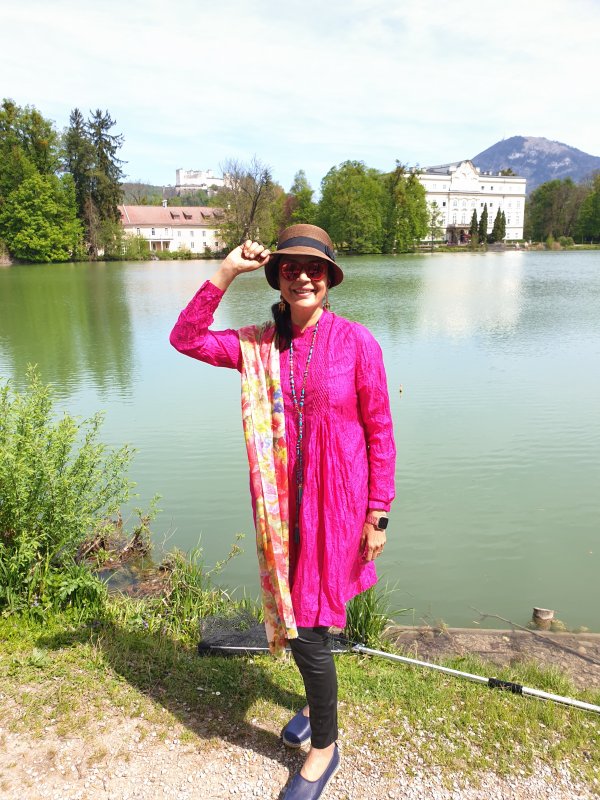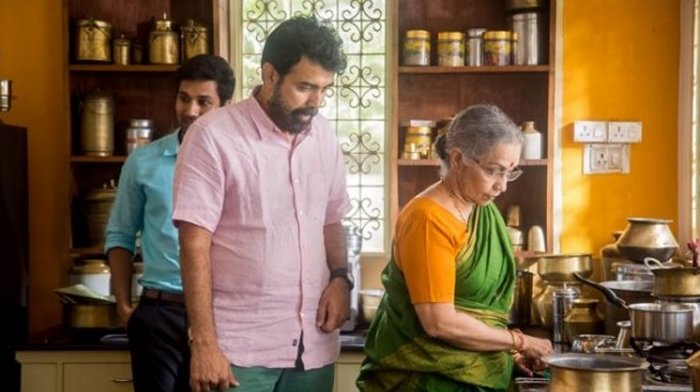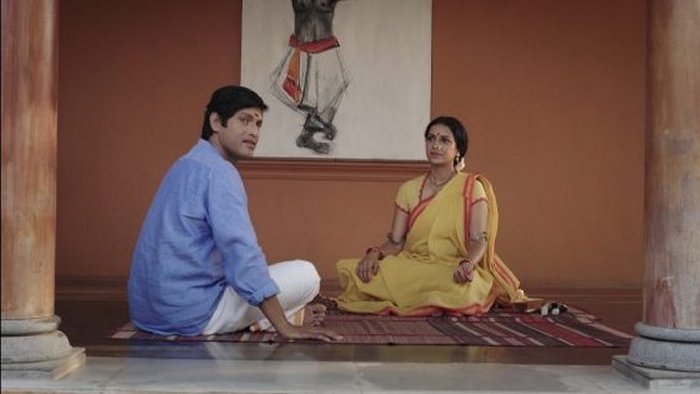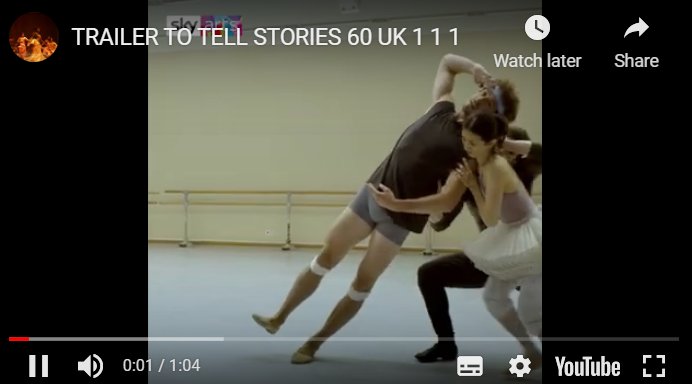
|   |

|   |
May 1, 2019  Every day brings a chance for you To draw in your breath Kick off your shoes And DANCE - Oprah Winfrey There have been flood of celebrations across India for WORLD DANCE DAY (April 29) that it would seem as if the day was created by an Indian. The fact is that the day, follows World Music Day (June 21) and World Theatre Day (March 27) and all three were created by - Jack Lang, Maurice Fleuret (Music) / International Theatre Institute (Theatre) / Dance Committee of the International Theatre Institute (Dance). India does not stop dancing. Performances occur throughout the year with a deluge during the months between October and March. However, a single day to commemorate the very act of dancing also focuses on issues and reflections on those individuals who have shaped and tinted the gorgeous, gritty and glamorous world of dancing and dance making. Over the past 20 years, events have become more and more layered and interesting. Going beyond stage performances, it is interesting to watch as some curators and presenters mark WORLD DANCE DAY by conversations with senior artistes, spotlighting the next generation talent, lifting the veil off various composition and choreography processes, shooting and producing short videos, and using Instagram to grab attention. New York celebrated two weeks of nonstop dance via the KATHAK festival and Rajika Puri's carefully curated DANCING FOR THE GODS. Sujata Mohapatra received rave reviews for her meticulously crafted performance. GEETA CHANDRAN's 15th edition of NATYA VRIKSHA'S YOUNG DANCERS FESTIVAL continued to draw the dance elite of New Delhi. Manasvini Ramachandran, daughter and student of Revathi Ramachandran, received accolades for her beautiful Bharatanatyam performance as did Rajashri Praharaj for her Odissi recital which was steeped in the ethos of her style. Sanjukta Wagh's BEEJ GARAGE, Mumbai, organized conversations between Astad Deboo and Manipuri legend Darshana Jhaveri. #DANCE & MUSIC ON CAMERA It is in this atmosphere that I want to highlight three films that have been released about classical dance and music.  Sarvam Taala Mayam The first is SARVAM TALA MAYAM, feature that focuses on Carnatic music and the challenges of caste and the guru-sishya tradition. Directed by Rajiv Menon, the story revolves around a humble young man who feels that playing the Mridangam for Carnatic music is both his dream and his calling. The challenges of family, society and his inner demons make for a compelling film with music composed by AR Rahman. Rajiv Menon's mother Kalyani Menon is an accomplished classical singer and must have been a guide for the score of this sensitive film which features Bharatanatyam guru Shanta Dhananjayan in a prominent role.  His Father's Voice In the glamorous bubble of Hollywood, the world premiere of Auroville based Kaarthikeyan Kirubhakaran's HIS FATHER'S VOICE has attracted much attention via social media for its concentration of Bharatanatyam dancers and the fresh music track created by Vedanth Bharadwaj. A clutch of Chennai based dance talent (Sudharma, PT Narendran, Christopher Guruswamy and senior guru Balagopal of Kalakshetra), HIS FATHER'S VOICE is anchored around the tale of a young man who wishes to reunite with his father and heal early wounds of separation loss. Bharatanatyam and surreal forest scenes quilt this tale that seeks to narrate the visually compelling images of love and pain. I am waiting to watch this film in its Asian premiere later this month but the early reactions from cast and crew from Los Angeles has been infectious with its unbridled enthusiasm. The co-producer of the movie is the beauteous dancer Ashwini Pratap Pawar. The third film being discussed in this editorial is THE WHITE CROW, a biopic of Russian ballet legend Rudolf Nureyev and his famous defection during the Bolshoi's tour of Europe in the early 1960's. Played by ballet dancer Oleg Ivenko and directed by celebrated British actor Ralph Fiennes, this imperfect but compelling biopic has some fabulous dance sequences and brings a certain poise to the world of ballet. The now sensational defection at Paris airport, Nureyev's struggle as a gay man, his hauteur, charisma and sexy arrogance have been well crafted by the writer and cinematographer. These films remind us about the lack of biopics of our own celebrated dance artistes. We have some very successful classical dance/music films like SANKARABHARANAM (Telugu) and SALANGAI OLI (Tamil) but with today's heroines shaking their booty instead of Mudras, there is little chance of THE WHITE CROW being replicated in an Indian environment. All three films have had to navigate the minefield of questions. Is this a film for dance and music lovers? Is it to popularize classical dance and music to a mainstream that seems to have lost interest in these forms? Is it able to be true to its core while being relevant cinematically? Will it succeed at the box office? While the Indie film market has received a huge boost from the multiplex format and the streaming channels like Amazon Prime and Netflix, I am celebrating the very fact that there are three films on dance and music to watch and enjoy, while appreciating some of the actors' performances. #KHAN MANIA
Landing on my Facebook Timeline was the digital portrait session with dancer/choreographer Akram Khan. Now a huge celebrity in the UK, Khan has received worldwide acclaim and the Olivier award for his final magnum opus XENOS. In this video clip of 21 questions, he discusses what motivates and inspires him. This format is both informal and informative, catching Khan in his home environment with his young son Kenzo. Now immersed in creating his new choreography based on the depletion of natural resources called OUTWITTING THE DEVIL, Khan will, for the very first time, NOT dance in his production. LA based Mythili Prakash is in London working in this much awaited production. While in London, I remember the long lines outside the Sadlers Wells counter in the lobby where audiences were queuing up, not to buy tickets but the DVD of Akram Khan's XENOS. "How wonderful," I thought, that there was a market for the expensive DVD and that the beautiful filming of Akram's choreographic vision would live on. Why do we dance?  For those who can get SKY ARTS, don't forget to watch the gorgeous multi part documentary hosted by Akram Khan called WHY DO WE DANCE? Featuring great artistes from around the world representing the most influential dance forms, the multi part series features Aditi Mangaldas and Padmini Chettur from India. #BRIT TAALAM
Dance in Britain continues its confident swagger despite the looming uncertainty of BREXIT. The much awaited BBC YOUNG DANCERS competition is once again coming to its exciting finale and the winner will be announced soon. It was in the UK about 20 years ago that I first encountered a particular brand of Bharatanatyam and Kathak that was since referred to as BRITISH BHARATANATYAM / KATHAK. Over the years, as I continued to visit and watch several artistes, I realized that both forms had a distinct "TINT" from their UK environment. It is a certain precision that sometimes borders on the mechanical but several dancers seem to be trained in that mode. Now when I use the word, it does not mean that India and US based dancers do not have precision. It is that the British optic is veered towards seeing dance in a certain way that values athletic and technical precision over poetic improvisation that India based dancers seem far better at. #LIVE FOREVER While in Florence, Italy, I visited the gorgeous Santa Croce (Sacred Cross) Church which contained the tombs of celebrated Italians - sculptor/painter MICHELANGELO, astronomer GALILEO, composer ROSSINI and political strategist MACHIAVELLI. How surreal it seemed to be walking over the ornate stones and installations of these adventurous and brave dreamers. How heavily they were criticized during their lifetimes and how revered they are today! How courageous they were to challenge the power of the Catholic Church with their independent spirit and refusal to conform. Many left Florence during the imperious reign of the MEDICI family and were hounded for their disloyalty. Finally, after they breathed their last, there was a tussle to claim their bodies and proclaim to the world that these pioneers "belonged" to Florence! I also visited the house of poet DANTE, who wrote DIVINE COMEDY, a benchmark for Italian poetry. The house has been converted into a museum and has been meticulously maintained. While burial is not the custom for many Indians, it is still a moment to ponder on... How will we be remembered? Can we look at the homes of great artistes and be proud that the government has recognized and honoured them in their lives and beyond? The sad answer is mostly NO. Our heritage lies crumbling and our histories re-written and mangled. Which is why I marvel at the staunchly stubborn attitudes of conservationists in Italy, Austria and elsewhere, who are not fazed by inept politicians or bumbling bureaucracy and who have created a new generation of heritage scholars and students who work tirelessly to hold and cherish their history. #MA3KA, REBOOTS and REMEMBERING
In April, I was invited to participate in a two day festival organized by Odissi dancer Sharmila Mukerjee in Bengaluru. Performing MA3KA, my 2009 solo NEO BHARATAM work demanded both a relook and an edit. As part of an evening that showcased three different style of dance, I tried to edit the 48 minute track to 32 minutes. I realized while rehearsing and performing that I felt rushed. The response to MA3KA, as with all my work, was mixed. But the opportunity to continue to hone and touch upon an earlier creation is a great way of discovering how I respond to the same material and original ideas a decade later. With lighting adapted to the Chowdiah stage by Keerthi Kumar (professional dancer at Madhu Nataraj's NATYA STEM) this edition of MA3KA did not feel as "full" and realized as the performance in Melbourne 5 months ago. However, it did force me to think of adjusting and reframing the shortened work for a very large stage. The next morning was a very interesting panel discussion with Geeta Chandran, Madhu Nataraj and Vyjayanti Kashi. Three dance styles, three very different personalities and all three being part of the dancer mother-daughter paradigm. As the moderator, I listened to these successful women who covered a range of topics from expectation, teaching / learning from a parent who is already a star, stimulating the millennials, technology as mediator for live arts, outreach efforts, corporate mandates to the diminishing power of the live dancing body in the crowded world of INSTA everything. The 75 minute conversation flowed effortlessly, reinforcing the fact that the best discussions are actually ideas and sharing between confident and articulate artistes who do more than dance and teach. #UPDATES & UP-CYCLED Why do we agonize over creating newer and newer dances every time? For those of us who have more than 25 years of creation behind us, is it not better to relook at our earlier works and see which actually appeals after some time has passed? Every ten years, there is a new generation of dancers and dance audiences. MA3KA, created in 2009 was watched for the very first time in Bengaluru, TEN YEARS AFTER its first premiere in Chennai. It was both a new audience and a new reaction - saturated as we are with social media and its taste arbiters. I have found a whole new audience for A MILLION SITAS, created in 2010, and it continues to evolve and move audiences around India and elsewhere. Now, I am re-looking at NAACHIYAR, my 2003 group production on ANDAL and finding newer ways to say what I want to with a new set of dancers. Personally, I have invested a great deal of time and resources in creating original music tracks and commissioning new costume silhouettes and choreography to just put it aside after one season and move onto yet another idea. The value of revisiting and reworking older works has never before been more urgent, especially when the millennials are blatantly copying anything and everything and passing it off as "new" and "original"!  Jiri Kylian's SYMPHONY OF PSALMS In Vienna, I watched a reboot of celebrated Dutch choreographer Jiri Kylian's expanded work of his celebrated 1978 presentation titled SYMPHONY OF PSALMS. Filled with images of misogyny, patriarchy, female manipulation and coercion, the long version had several stunning visuals, especially when the women fell to their knees and embraced the waist of a male dancer posturing as Jesus on the cross. This amplified version seemed fresh and relevant during times of debate of outdated power tussles between Religion and Society. Shobhana Jeyasingh, who revolutionized modern Bharatanatyam in the UK, also revisited her 1989 ensemble work CONFIGURATIONS with a 2012 update.  Hari Krishnan's SKIN And that is why I am enthused when I learn about Canadian choreographer Hari Krishnan's updated evening of earlier group and solo works for the LA MAMA NEW MOVES FESTIVAL this month in NYC. I am receiving more and more requests from gender fluid dancers about pathways, direction, advice and possible mentoring. With Bharatanatyam and other classical dance forms being mostly hetero-normative, it is high time that young dancers come to terms with their own reality and either embrace or decide clearly to "hide" their personalities beneath the tired Nayaka-Nayaki tropes. Whichever the choice may be, the dancer has to deliver a performance of conviction and technical excellence. If not, it just dwindles into maudlin self-indulgence. #TA KI TA TOM
VP Dhananjayan celebrated his 80th birthday with a shower of accolades from across the dance world. ABHAI continues its successful summer sessions with immersion intensives with Kiran Subramanyam, Meenakshi Chittaranjan, Narthaki Nataraj, Bragha Bessell and Vyjayanthimala Bali, and Kalari with Vasanth. #Natyarambha, the popular Instagram hashtag has an interesting contest called #ADAVUINASAREE which has attracted several dancers posting videos of themselves practising Bharatanatyam adavus. In a return to narrative dance making, mythology is resurfacing as a favourite theme for choreographers. MEDUSA is the newest production of UK's Hofesh Schecter and Akram Khan creates from the myth of Frankenstein called CREATURE for the English National Ballet next year. Mira Kaushik prepares to step down after being the Director of AKADEMI, UK for over 30 years. As part of the 40th anniversary celebrations of this much storied arts institution, Chennai based Swarnamalya Ganesh and her orchestra kick off the yearlong event with a lecture demonstration at ASIA HOUSE, London, followed by two performances. It seems to be that almost everyone in the UK has thought of the same topic for dance. Le Sacre Du Printemps (The Rite of Spring), first made famous by Polish/Russian ballet star Nijinsky in 1913, is now the favourite for contemporary choreographers. Seeta Patel, a protege of Mavin Khoo, is choreographing a Bharatanatyam accented work on this theme. And so is China's Yang Liping who brings Oriental philosophy to modern ballet in the work of the same title. The much disputed and delayed documentary about the 1972 landmark gospel concert of late Soul Queen singer Aretha Franklin titled AMAZING GRACE is finally being released. Election fever gripped India and this time around dancers were spotted on social media, dressed in costume and campaigning for their chosen political party. It is heartening to note a rise in civic consciousness among the creative set, although voter turnout this year has been lower than 5 years ago. For the millions of first time voters, getting up in the morning and lining up in the heat may have been too much of an effort. Most of the citizens I saw on my voting day (April 18th) were 55 years and above. Whichever party gains the majority, we hope that there is a more coherent cultural policy in place and that democratic dissent is not squashed, silenced or obliterated. #DANCE & DEMENTIA I don't want to sound morbid, but there are so many reasons why DANCE is good for us. The late neurologist Oliver Sachs says that, "Religious services, ritual, theatre, music and gardening serve to anchor patients. If the brain is to remain healthy, it must remain wondering, playing, exploring and experimenting until the very end." What else is dance about but all this and more? We are so lucky to call ourselves DANCERS. Let us celebrate our lives with the joy and awareness of what this choice brings to us! Be proud. Be aware. Be excited. Be curious. Be brave. Be restless. And most of all BE YOURSELF! The first edition of the ARANGHAM LEARNING LABS has received a great interest among the dance community. Aimed at classical dancers, I am urging you to apply as soon as possible. Let May bring the warmth to your bones and your spirit. Until next time! Dr. Anita R Ratnam Chennai/Singapore/Kuala Lumpur Twitter: @aratnam Facebook: Anita R Ratnam Instagram: @anitaratnam Blog: THE A LIST / anita-ratnam.blogspot.in Post your comments |